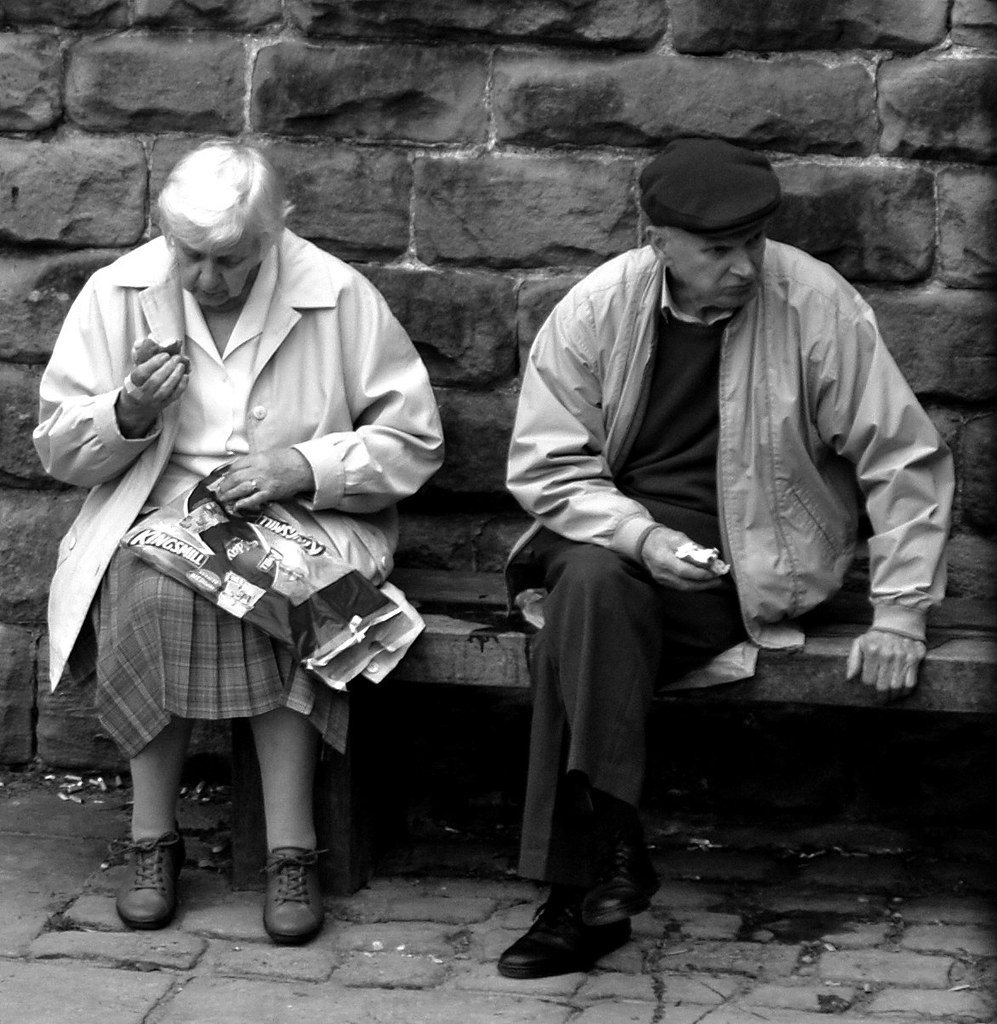Chapter 6. Social Interaction

Learning Objectives
- Describe the social dimensions of emotional life.
- Explain the sociological concept of “reality as a social construct.”
- Explain the impact of social roles on individual identities and status.
- Use Goffman’s dramaturgical perspective to analyze the social dynamics of self-presentation.
Introduction to Social Interaction
Face-to-face interaction of even the simplest sort is a far more socially intricate operation than people generally recognize. It is rife with unacknowledged rituals, tacit understandings, covert symbolic exchanges, impression management techniques, and calculated strategic maneuverings.
The Canadian born sociologist Erving Goffman went to the Shetland Islands in the 1950s to do fieldwork on the social structure of the island community for his PhD dissertation. However, he found that the complex interpersonal relationships in the hotel he stayed at to be a much richer site for social study. The theories that became the basis for his dramaturgical analysis in The Presentation of the Self in Everyday Life (1959) developed from his detailed observations of the elaborate “interaction rituals” in everyday social interaction.

Goffman (1959) describes the way that people try to control the impression they make on others in social encounters. They want to be received well. They want to be taken as credible. They want to be accepted. At the same time, the others are interested in checking up on the person’s sincerity, trustworthiness and general suitability as someone worth spending time with. In face-to-face encounters in “real time,” they might not have access to information from the person’s background. So in the absence of confirming or disconfirming information that the person is as they claim, they compare what the person intentionally expresses about themselves against other expressions that the person unintentionally “gives off”: facial expressions, mannerisms, gestures, nervousness, quality of clothing, application of make-up, use of language and so on. This dynamic between a person’s self-presentation and the audience’s critical discernment sets in motion a number of micro-level structures that govern the course of social interactions no matter their specific content.
In the Shetland Islands, Goffman observed how islanders were sometimes amused to watch the manners of neighbours who dropped in for a cup of tea. As there were no impediments to the view in front of the simple cottages and no electric lights inside, they were well positioned to see how a neighbour would drop one expression as they approached and adopt another as they entered the door. The visitor consciously composed their “social face” by adopting a “warm expectant smile.” Based on these cues, the hosts were able to judge how the neighbour really felt about them. However, other neighbours who were aware of this dynamic of examination adopted a social face well before turning into the cottage,” thus ensuring the projection of a constant image” (Goffman, 1959). Successful impression management requires an awareness of both the expressions that one gives and the expressions that one gives off. In this manner, Goffman examines how impression management in social interaction always involves some degree of cynical performance.
In his essay “On Face-Work,” Goffman (1972) suggests that individuals in any social encounter attempt to establish and act out a line, not unlike the pick-up line a suitor might try out on a potential companion in a bar. The line the individual adopts in any social encounter expresses their view of the situation, their attitude towards the other members of the group, and especially, their attitude towards themselves. It can be communicated verbally, as in the pick-up line noted above, or non-verbally, by a display of attitude: pride, deference, disdain, irritability, humility, joy, depression, etc. Consciously or unconsciously, they decide what “line” they are going to take to respond to the situation. Their line might be, “I’ve been down on my luck, can you help me out?” or “I know more about wine than that guy, so I’m going to let him know it” or “I am really polite so I am not going to say directly that the dress does nothing for her,” etc.
As a result of this line, they present a certain face to the group that Goffman describes as a claim to a “positive social value” for themselves. “This is the type of person I am.”
Face is an image of self delineated in terms of approved social attributes–albeit an image that others may share, as when a person makes a good showing for his profession or religion by making a good showing for himself (Goffman, 1972).
Face is similar to the sociological concept of social role, except that it emphasizes the dynamics of “face to face” social interaction involved in playing the role. It is not enough to “be” a doctor and have a medical certificate, one has to present oneself professionally and knowledgeably, or perhaps warmly and caringly, to have one’s “doctor-ness” accepted. Without the credibility established through face-work, doctor patient encounters can go badly.
Moreover, the face one presents varies depending on the situation. People present themselves as humble, sincere, knowledgeable, decisive, aggressive, or easygoing, depending on the circumstances and the nature of the social crowd present. Goffman remarks that whether people intentionally take a specific line or present a specific face, or not, they will find that the others assume they have done so and will act towards them accordingly. The flow of events unfolds according to how the participants have read each others faces.

Therefore, the dynamics of social encounters play out based on whether an individual is successful in their bid to “maintain face” or whether they make a gaff or do something that inadvertently interrupts their performance. If they are a professor, they might misspell a word on the blackboard, which undermines their claim to rarefied knowledge and erudition. If they are a new MLA (Member of the Legislative Assembly), they might have to account for inappropriate pictures or posts on their Facebook page which undermine their claim to have the requisite responsibility and perspicuity for the job. If they are a driver, the hint of liquor on their breath might undermine the appearance of sobriety they wish to display to a police officer at a check stop. Then it becomes a question of whether they can “save face” or whether they will end up “shame faced.” Goffman calls the management of one’s face in light of the responses of others—how we make it consistent with the line we are acting out, how we make adjustments to cover over inconsistencies or incidents, etc.—face-work.
The strange insight that Goffman offers is that one’s “face”—essentially positive social attributes one claims for oneself in any situation, but also one’s actual face (its expressiveness, nonverbal cues, potential for betrayal)—does not really belong to the individual:
A person may be said to have, or be in or maintain face when the line he effectively takes presents an image of him that is internally consistent, that is supported by judgments and evidence conveyed by other participants, and that is confirmed by evidence conveyed through impersonal agencies in the situation. At such times the person’s face clearly is something that is not lodged in or on his body, but rather something that is diffusely located in the flow of events in the encounter and becomes manifest only when these events are read and interpreted for the appraisals expressed in them. (1972, pp. 6–7)
The acceptance or rejection of one’s face is in the hands of the others who generally are prepared to accommodate small glitches in performance, but not indefinitely. In Goffman’s analysis, a social encounter is a precarious affair in which each of the participants desperately hopes to survive without disaster or mishap. An elaborate system of tact and etiquette evolves to which the participants in a face-to-face encounter consciously or unconsciously submit, even when they have their doubts about the credibility of a performance, so that the group as a whole can maintain face. If the disruption to someone’s face becomes too severe however a “scene” is created and the encounter falls apart. Goffman illustrates the way in which even the seemingly free and spontaneous interactions of everyday life are governed by intricate and predictable structures of self-presentation and mutual accommodation.
Media Attributions
- Figure 6.1 Unspoken conversation by Yusaini Usulludin, via Flickr, is used under a CC BY-NC 2.0 licence.
- Figure 6.2 The Face, Like A Switch by Derrick Tyson, via Flickr, is used under a CC BY 2.0 licence.
- Figure 6.3 Time to forgive and forget … Kak Yut and Family by Yusaini Usulludin, via Flickr, is used under a CC BY-NC 2.0 licence.

